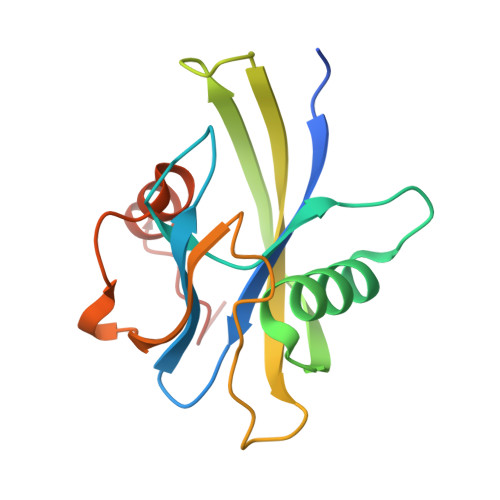Contribution of isopentenyl phosphate to plant terpenoid metabolism.
Henry, L.K., Thomas, S.T., Widhalm, J.R., Lynch, J.H., Davis, T.C., Kessler, S.A., Bohlmann, J., Noel, J.P., Dudareva, N.(2018) Nat Plants 4: 721-729
- PubMed: 30127411
- DOI: https://doi.org/10.1038/s41477-018-0220-z
- Primary Citation of Related Structures:
6DBY, 6DBZ - PubMed Abstract:
Plant genomes encode isopentenyl phosphate kinases (IPKs) that reactivate isopentenyl phosphate (IP) via ATP-dependent phosphorylation, forming the primary metabolite isopentenyl diphosphate (IPP) used generally for isoprenoid/terpenoid biosynthesis. Therefore, the existence of IPKs in plants raises unanswered questions concerning the origin and regulatory roles of IP in plant terpenoid metabolism. Here, we provide genetic and biochemical evidence showing that IP forms during specific dephosphorylation of IPP catalysed by a subset of Nudix superfamily hydrolases. Increasing metabolically available IP by overexpression of a bacterial phosphomevalonate decarboxylase (MPD) in Nicotiana tabacum resulted in significant enhancement in both monoterpene and sesquiterpene production. These results indicate that perturbing IP metabolism results in measurable changes in terpene products derived from both the methylerythritol phosphate (MEP) and mevalonate (MVA) pathways. Moreover, the unpredicted peroxisomal localization of bacterial MPD led us to discover that the step catalysed by phosphomevalonate kinase (PMK) imposes a hidden constraint on flux through the classical MVA pathway. These complementary findings fundamentally alter conventional views of metabolic regulation of terpenoid metabolism in plants and provide new metabolic engineering targets for the production of high-value terpenes in plants.
Organizational Affiliation:
Department of Biochemistry, Purdue University, West Lafayette, IN, USA.
















